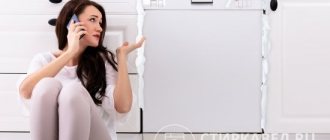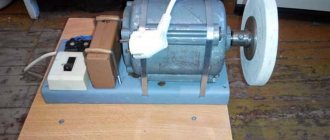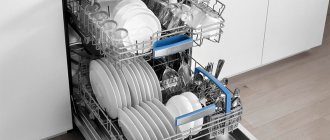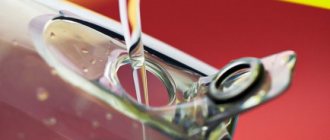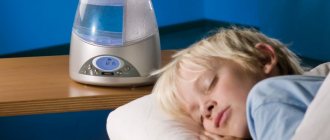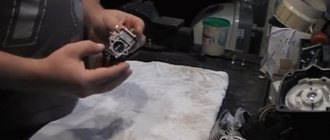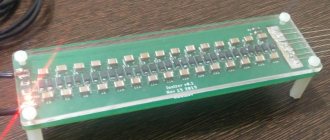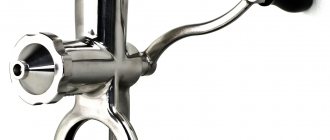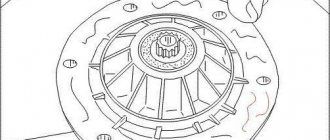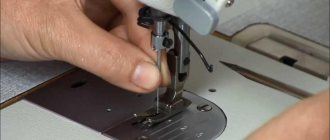Owners of dishwashers (hereinafter also referred to as PMM, dishwashers) sooner or later are faced with the fact that they have to spend substantial sums of money on the purchase of chemicals for the dishwasher. Therefore, many are interested in whether it is possible to make dishwasher tablets with your own hands as a cheaper alternative. The urgency of the problem is added by the fact that the “all-in-one” tablets offered to customers in stores contain substances that are harmful to health.
Dishwasher tablets available in retail stores
The composition of industrial tablets contains: chlorine, formaldehyde, phosphates and even hydrochloric acid. How to replace dishwasher tablets? Below are recipes for making homemade “homemade” tablets that can successfully replace store-bought products. At the same time, their cost is several times less.
Products based on washing powder
The idea is to use laundry detergent for children's clothes and linen as a detergent. This powder is harmless and has hypoallergenic qualities.
Prepare and mix the following ingredients in a certain proportion:
- children's washing powder intended for automatic washing, for example “Ushasty Nyan” - 4 cups;
- soda ash - 1.5 cups;
- any liquid intended for hand washing dishes - 5 tablespoons;
- water – 50 ml (1/4 cup).
Washing powder for all types of laundry “Ushasty Nyan”
the resulting mixture, which looks like a thick paste , into small molds. The main thing is that their size is not too large and the workpieces can subsequently be placed in the bunker. Then wait until the slurry dries to form briquettes. You can effectively wash dishes with homemade “bricks” without fear for your health.
To prepare tablets according to this recipe, you will need soda ash; baking soda will not work.
Even when using all-in-one tablets, it is necessary to add special salt to the hopper, otherwise the tap water will not soften to the desired level. The same applies to the rinse aid - in any case, it is advisable to pour it into the container provided for this purpose.
Read our article about how much salt you need to put in the dishwasher.
DIY tablets
Some craftsmen and lovers of experiments went even further and came up with not just how to make powder at home, but how to prepare tablets. Tablets are the most popular dishwasher detergent, but they are also the most expensive. Marketers do a great job of attributing unusual properties to them. We found recipes on how to make such a pleasure at home for much less money.
To prepare the first recipe you will need:
- 350 g of washing powder, look carefully at its composition, because it is practically no different from dishwasher powder, except that it does not contain soda;
- 150 g of soda ash, which not only helps to wash away dirt, but also softens water;
- water as a binding element.
So, mix the dry ingredients, adding water little by little, you should get a thick paste. We fill an ice tray with this slurry, and after a couple of hours we take the finished tablets out of it. Please note that the form should not be too large; be guided by the size of store-bought tablets, since the tablet should fit into the dishwasher compartment.
The second recipe, slightly different from the first, you need to take 80 g of baby powder (not so aggressive), for example, “Eared Nanny”, 18 g of soda and 2 g of liquid dishwashing detergent. The dry ingredients are mixed and then dish soap is added. The resulting mass is placed in ice molds until it hardens.
The described recipes for preparing dishwashing tablets at home may not be super environmentally friendly, but they are much cheaper and more economical.
From a safety point of view, you can use this recipe for preparing tablets. You need to take 150g of baking soda, 200g of borax, half a kilo of Epsom salt, which is popularly called magnesia, and then mix all the ingredients well. After this, gradually add concentrated lemon juice or citric acid solution until a thick paste is obtained. Then put the pulp into molds and wait until the mixture hardens. The dishwasher tablets are ready.
Pros and cons of homemade remedies
Judging by the recipes and their composition, it is not difficult to guess all the advantages and disadvantages of homemade dishwashing detergents. Let's list them for complete clarity, and start with the pros:
- the most important advantage is the low cost, one portion of homemade powder will cost about 1.5-2 rubles, if you take the well-known Finish, then the same portion (30 g) will cost 15 rubles, a homemade tablet costs 1.7-2 rubles, but the factory one costs an average of 20 rubles per piece. Even if you use dishwasher salt separately, there are benefits;
- the composition of the home remedy can be changed depending on the needs and characteristics of the dishwasher, adding more or less of a substance;
- when preparing the product with your own hands, you know exactly what you are putting in and what you will use to wash the dishes, and therefore the composition is safer.
Such funds also have disadvantages:
- Firstly, you will have to spend your personal time to prepare the detergent, although 20-30 minutes is not that much.
- Secondly, the powder and tablets do not have a very aesthetic appearance. Although how to look at it and try.
- Thirdly, you will have to experimentally select a portion of such a detergent for one washing cycle; it may turn out that its consumption will be slightly more than a factory detergent, but at such a cost it does not matter.
So, whether or not to use dishwashing detergent in the dishwasher is up to you. Read reviews from people on thematic forums, especially since in most cases real people communicate on them, and not marketers from well-known manufacturing companies. Good luck with your experiments!
Briquettes based on soda ash
Experienced housewives often use the following successful combination of several ingredients, resulting in a good composition for washing cutlery:
- soda ash - 3 cups;
- table/Epsom salt (magnesia) – 1.5 cups;
- citric acid – 0.5 cups;
- manual dishwashing liquid - 3 tablespoons;
- water – 1 glass.
Before mixing, the soda ash must be heated in a clean frying pan for 15 minutes, stirring occasionally. Only after this can you add the remaining components. Then the mixture is distributed into molds and waited until it dries.
Citric acid is a popular cleaning agent.
Popular and proven recipes
Based on mustard powder
Dry mustard does an excellent job of removing stains from kitchen utensils. To prepare a detergent based on mustard powder you need:
- Take equal amounts of baking soda and dry mustard.
- Mix.
- Add dishwashing liquid to the resulting mixture and mix again until it forms a gel.
Important: to avoid clogging the dishwasher mechanism, mustard powder cannot be used in its pure form due to its structure after grinding
With added soda and salt
Ingredients:
- 2 glasses of baking soda;
- 1 glass of salt;
- 1 glass of water;
- 0.5 cups of citric acid.
Additional equipment is a form for forming tablets.
Mix the dry ingredients, slowly add water to the resulting mixture, and stir. Place the semi-liquid mass into molds to harden. The time for forming tablets in molds is from 30 minutes to one and a half hours.
Soap based gel
Main components:
- 1 liter of hot water;
- 0.5 cups of soda (preferably ash);
- 50 grams of toilet soap (preferably baby soap);
- essential oil.
Preparation procedure:
- prepare soap shavings using the rubbing surface of a fine-toothed household grater;
- add shavings to boiling water, mix them well;
- Add soda and aroma oil to the resulting mass.
A mixture of soda and borax
Borax has bactericidal properties and also helps to avoid stains on dishes during washing.
To prepare tablets using borax, you need:
- mix baking soda and borax in equal doses;
- add dishwashing gel or lemon juice to the dry mixture;
- Place the resulting paste in ice trays and freeze.
Baking soda tablets
There is another elementary recipe, the ingredients for which can be found in almost any kitchen. Prepare the following ingredients:
- baking soda – 2 cups;
- table salt – 1 glass;
- citric acid – 0.5 cups;
- water – 1 glass.
You can also make “bricks” for dishwashers using baking soda.
One glass of soda is heated, for which it is placed in the oven on a baking sheet at a temperature of +200 ℃. You need to heat for 30 minutes, stirring. Then all the ingredients except water are added to the hot soda. When the dry mixture is ready, add a glass of water to it in parts, avoiding too much foaming. The resulting slurry is distributed into molds in a warm place and allowed to dry.
How to prepare tablets for PMM?
To make a tablet preparation for PMM, you will need basic things that are always on hand. The entire recipe for preparing homemade detergents was invented by ordinary users, so the products contain only accessible and inexpensive ingredients. Below are popular folk recipes. They always contain soda - it not only helps remove dirt, but also softens the water, simplifying the washing process.
Recipe No. 1
Take:
- baking soda - 500 g;
- salt - 250 g;
- water - 250 ml;
- citric acid - half a glass;
- ice cube tray.
Preparation of tablets:
- Sprinkle a glass of soda on a baking sheet. Place it in the oven for half an hour. Temperature - 200 degrees.
- Stir the baking soda periodically to prevent it from burning and sticking to the baking sheet. After heat treatment, the soda becomes crumbly - this will be the base for the tablets.
- Mix heated and unheated soda in a saucepan - one glass each. Pour in some water and stir the mixture. Foam will appear. Pour in the remaining water when the foaming process is complete to prevent the foam from spilling out of the container.
- Stir the mixture thoroughly. Place in ice trays. You need to spread the soda mixture right away - it thickens quickly.
- After half an hour, homemade products can be removed from the mold. Place the tablets in a jar or bottle with an airtight lid.
Recipe No. 2
Take:
- baking soda - 150 g;
- Epsom salt (magnesia) - 500 g;
- borax - 200 g;
- lemon juice.
Mix the ingredients and then pour in the lemon juice. The hissing will begin. When the reaction is complete, pour the lemon mixture into the same ice cube trays. When the composition dries, the capsules are ready for use.
You can prepare washing liquid in a similar way - for this, dry capsules are diluted with water. You can also add eco-washing powder to the recipe - 1 cup. But be sure to make sure it is safe - see if there is anything dangerous in its composition.
Recipe No. 3
A user shared a homemade recipe:
- Take powder and soda ash in a ratio of 7:3.
- Pour in filtered water and the detergent you use to wash dishes.
- Fill the molds with the mixture.
Ready-made products are used here. The point of the recipe is that they take the most harmless products possible - eco or baby powders.
Recipe No. 4
How to prepare your own gel for PMM:
- Boil water - 1 liter.
- Pour 50 g of laundry soap into boiling water.
- Stir until you get a homogeneous mass.
- Add soda ash - 45 g.
- Stir until completely dissolved.
- Cool the mixture.
- Add a few drops of essential oil for scent.
Pour the homemade gel into a convenient container and use it - you can wash clothes and wash dishes with it.
Composition based on magnesium
Magnesia, or Epsom salt, successfully washes even the dirtiest dishes. Based on it, you can make a mixture by adding several other components in the following proportions:
- Magnesia/Epsom salt/Epsom salt – 2.5 cups;
- soda ash – 1 cup;
- sodium tetraborate (borax) – 1 glass;
- citric acid – 0.5 cups;
- liquid/gel for washing dishes – 4 tbsp. l.;
- water – 1 glass.
Sodium tetraborate can be purchased in such packages
Borax and Epsom salts can be purchased at pharmacies; these components are inexpensive. Dissolve citric acid in water. Mix the remaining dry ingredients thoroughly. Add the acid solution to the dry mixture, avoiding too violent a chemical reaction. Mix all the ingredients well, distribute the resulting slurry into the molds and wait until it dries.
The better all the components are mixed, the better the homemade tablets will wash tableware.
Homemade Recipes
No. 1 - based on soda ash
Not the safest recipe in terms of composition, but easy to prepare. You will need substances that are easy to obtain. What to prepare?
- Washing powder. Choose an option without phosphates and aromatic additives, preferably for children. It will perform the function of a foaming agent.
- Soda ash.
- Water - for binding the components.
7 to 3 is the proportion for powder and soda. Mix them. Gradually add water until it becomes a paste. Now find the appropriate size molds. Dry the mixture and transfer the finished product to a storage container.
No. 2 - based on glycerin
In this recipe, the binder is not water, but glycerin. It can also be replaced with regular liquid dishwashing detergent. Take:
- 160 grams of washing (detergent) powder.
- 36 grams of soda ash.
- 4 grams of glycerin (or liquid detergent, gel).
Mix, dissolve and dry. Ready!
No. 3 - multi-component recipe
What you will need:
- Soda ash (75 grams).
- Borax (100 grams). This is sodium tetraborate or boric acid salt. Performs the functions of an antiseptic and preservative. It is of natural origin (mineral). You can buy it at a pharmacy or at a specialty store that sells soap-making products.
- Epsom salt (250 grams). Magnesia is magnesium sulfate, consisting of magnesium salt of sulfuric acid. Sold in pharmacies in portions weighing 20–50 grams or in ampoules.
- Citric acid (20 grams). You can use freshly squeezed lemon juice.
Dissolve the lemon juice with water, mix the remaining ingredients and pour the citric acid solution into them. At this moment, a reaction will begin with the release of heat, so be careful: to avoid getting burned, it is better to work with gloves. When the sizzling stops, pour the mixture into molds and dry.
The tablets are recommended to be used together with dishwasher salt. If you want to save money on it, read the review about replacing salt with cheaper analogues.
So, making an analogue of expensive household chemicals from simple components in everyday conditions is not at all difficult. It’s just better to start saving after the expiration of the warranty card for the PMM, otherwise if a breakdown occurs and the service center discovers the reason for using non-specialized chemicals, you may be denied free service. Read more about the dishwasher warranty in the article. Good luck with your experiments and smart savings!
Bad 1
Interesting 4
Super
Advantages of homemade briquettes for the dishwasher
Why is it more profitable to prepare universal dishwashing detergents with your own hands? Firstly, they are much cleaner in environmental terms and do not contain substances harmful to humans, unlike the “secret” compositions of tablets produced by industry. Secondly, simple calculations show that one briquette made in the kitchen costs 4-5 times less than a store-bought one .
Dishwashing detergents that can be bought in stores are easy to use, but expensive
It only takes 15-20 minutes to make dishwasher detergent with your own hands; the rest of the time they dry in a warm room. The tablets are then stored in a dry and dark place. They can be used for six months, during which time the briquettes will not lose their basic properties. Once dried, the small “bricks” do not fall apart or crumble.
Regular use of self-made detergent compositions does not negatively affect the operation of the PMM. The surface of the dishes is washed clean, and after rinsing there are no streaks or stains left.
So, making universal briquettes for dishwashers with your own hands is very profitable. Compared to industrial household chemicals, such products have practically no disadvantages, but there are enough advantages.
What's included
Modern products have different compositions and include several components, which helps them:
- Remove visible dirt.
- Add shine to plates and cups.
But knowing what is included in detergents, what components, you can, without much difficulty, at home, create an analogue whose characteristics are not inferior to gels, powders and tablets that are sold on store shelves.
Sodium percarbonate
Or persalt, a derivative of hydrogen peroxide and sodium carbonate. The substance is often included in various powders for white laundry because it has a bleaching effect. When washing dishes, it is responsible not only for whiteness, the substance breaks down dirt, which helps eliminate them faster.
Sodium disilicate or “liquid glass”
The substance is part of many products and performs 2 functions: it connects substances into groups, and the second: it reduces water hardness.
Sodium gluconate
It is considered a well-known food additive, which, when used in excess, negatively affects human health. The substance is used in the oil and metallurgical industries; it is also used to create detergents. The main task of sodium gluconate is to prevent the formation of limescale.
Sorbitol
Known as a sweetener, it is used in household chemicals to give the product a uniform texture. Included in gels, it is considered a thickener.
Rapeseed oil methyl ester
It is considered a substance that is part of dish rinse aid and is “responsible” for reducing the surface tension of water.
Glycerol
It is actively used in the cosmetics industry, as well as in the creation of smoking liquids for electronic cigarettes. If we talk about the chemical industry, it is used as a thickener. Gives the product the desired viscosity and helps maintain consistency.
Acetic acid
It is needed for equipment because it washes away scale from machine parts and prevents its formation, to some extent. Adds shine to plates and cups.
Various surfactants and A-surfactants
“Responsible” for the formation of foam. Some of these substances are considered toxic because they are aggressive and can cause serious damage to health, affecting vital organs and causing an allergic reaction. First of all, A-surfactant compounds should be avoided.
What can replace special products?
There are alternative detergents, since special detergents do not have a cheap price policy.
- Degreasers;
- Rinse aids;
- Special salts.
However, it is imperative to wash it yourself at least once a month with detergents such as citric acid and vinegar.
There are some reasons why people refuse chemical detergents when using dishwashers.
This is due to the fact that such funds are expensive and run out quickly; their content includes substances that have a harmful effect on the human body; natural products are environmentally friendly and cheaper.
Composition of tablets from the store
To understand how to replace dishwasher tablets and how to make them yourself, you should thoroughly understand the composition. When the market was first introduced to tablets, it was extremely simple - the cheapest ones consisted of powder, the more expensive ones contained rinse aid and salt. Later, products a la “7 in 1” and even “all in one” appeared. Such multi-component products can not only wash and rinse dishes and soften water, but also add shine to utensils, as well as protect PMM from scale, and so on.
Let us list the main components that may be included in modern tablets. Please note that this is a general list - some product variants may not contain some ingredients. So, the composition usually includes:
- Sodium citrate is the sodium salt of citric acid. Stimulates foaming and has an antibacterial effect. Often found in the food industry as an additive E331.
- Sodium percarbonate is persalt, also known as oxygen bleach. Used to remove dirt.
- Sodium carbonate is a compound obtained from ordinary table salt (soda ash, washing soda). The main task is to soften the water.
- Sodium bicarbonate is a substance with a lot of names: sodium bicarbonate, sodium bicarbonate, baking soda. But we are used to calling it baking soda. It is also used to soften water.
- Sodium disilicate is a multifunctional substitute for phosphates in modern detergents and washing powders. This inorganic compound softens the water and helps the tablet components stick together.
- Sodium gluconate is a salt of sodium and gluconic acid. Alkaline additive, a valuable complexing agent, the purpose of which is to prevent the formation of scale and soften hard water.
- Ethylenediaminetetraacetic acid (EDTA) is an amino acid that helps remove scale from PMM.
- Isooctyl glucoside is a nonionic surfactant (tenside) used for rinsing.
- Sorbitol - acts as a substance that prevents drying.
- Rapeseed oil esters are also used in the rinse aid. Synthetic nonionic surfactant.
- Glycerin - allows substances to stick together and give them viscosity.
- Amylase and protease are enzymes used to break down proteins and carbohydrates.
- Subtilisin - breaks down fats.
- Surfactant for foaming.
Having done a little analysis of the listed components, even without having the education of a chemist, you can ask the question: why are so many water softening agents used, given that the ion exchanger and regenerating salt are responsible for this process? Another absolutely useless component is fragrance. Dishes, unlike clothes, should not smell of “Alpine freshness”. These and many other components can be safely eliminated and more environmentally friendly and cheaper tablets can be made.
